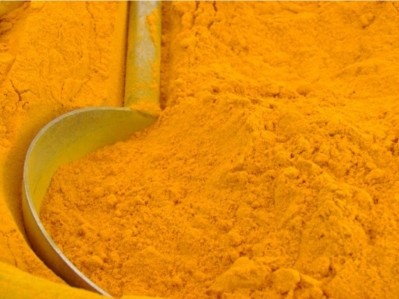Study suggests spicy breast milk as nature’s way of increasing taste tolerance

The team found that pepper-derived piperine was the only constituent detected in human milk after ingestion of a curry containing the active component of chili, capsaicin and ginger compound 6-gingerol.
The Technical University of Munich (TUM) researchers showed that piperine was detectable after one hour after consumption and was detectable in breast milk for several hours.
However, its concentration was assumed to be too low for conscious detection by the baby, and it could contribute to a sensory desensitisation toward pungency in later life.
“The observed maximum concentrations of 14 to 57 micrograms (μg) per litre were about 70- to 350-fold below the taste perception threshold of an adult," says Corinna Dawid, Professor of Food Chemistry and Molecular Sensory Science at TUM.
Roman Lang, who was initially involved in the study as a scientist at TUM adds, "It seems rather unlikely to us that the infants consciously perceive the sharpness.
“Nevertheless, it is conceivable that regular, low-threshold activation of the "pungent receptor" TRPV1 could help to increase tolerance for such substances later on."
Study method
The team began recruiting breastfeeding mothers for an intervention trial involving the consumption of the curry dish and subsequent collection of milk samples for flavour compound analysis.
Milk samples were collected using a mechanical breast pump and were stored in brown glass at -80°C until analysis.
The participants kept a nutrition diary and detailed their food intake in the two days prior to the intervention.
Two additional mothers agreed to collect small amounts (two millilitres (mL)) of additional milk samples within 10 and 24 hours after ingestion of the curry test meal, for analytical purposes. These samples were exclusively used for targeted analyses of pungent compounds.
Targeted and untargeted mass spectrometric (MS)- investigations identified piperine as an intervention-derived compound in human milk. However, concentrations are below the human taste threshold.
Further findings revealed the secondary plant compound curcumin, which is also abundant in curry, did not enter the breast milk.
"We were particularly surprised by the latter, since piperine is supposed to significantly increase the bioavailability of curcumin according to the results of other studies," comments Lang, who now heads the Biosystems Chemistry & Human Metabolism research group at the Leibniz Institute for Food Systems Biology (LSB).
Transfer of dietary constituents
Beside taste preferences adopted in later life, such as the bitter taste of coffee, some preferences originate from sensory programming in the first months of life through exposure to human milk.
For several odour-active compounds, such as vanillin (vanilla) a dietary transfer into milk has been demonstrated on a molecular level and is the basis of such early flavour learning.
Compared with odour-active substances, less attention has been paid to the potential transfer of dietary constituents, which are taste-active or contribute to food flavour though other chemosensory properties.
These compounds have been used in intervention studies with breastfeeding mothers, such as investigations of bitter tasting caffeine, which can be transferred into milk.
Similarly, the taste properties of milk have rarely been assessed. Only recently, one study evaluated the relationship between the bitter taste of milk and the bitter content of the mothers’ diets. For other taste impressions, only sketchy evidence exists.
In discussing the findings, the team suggests that piperine will interact with the TRPV-receptors of the child during nursing desensitising the TRPV1.
Therefore, it appears plausible that frequent exposure to piperine through human milk containing sub-taste-threshold concentrations could contribute to an increased tolerance at a later age.
Further discussion focused on the fact that none of the selected analytes of the test meal except piperine was identified in milk.
“We hypothesise a barrier between the mother's circulation and the mammary glands that, in the present scenario, only piperine could traverse,” the team says.
“This seems comparable to the blood brain barrier (BBB), which regulates and restricts access of compounds to the brain for protection and to enable proper functionality.”
Source: Molecular Nutrition & Food Research
Published online: doi.org/10.1002/mnfr.202100508
“Dietary Piperine is Transferred into the Milk of Nursing Mothers.”
Authors: Katharina N´Diaye et al.














